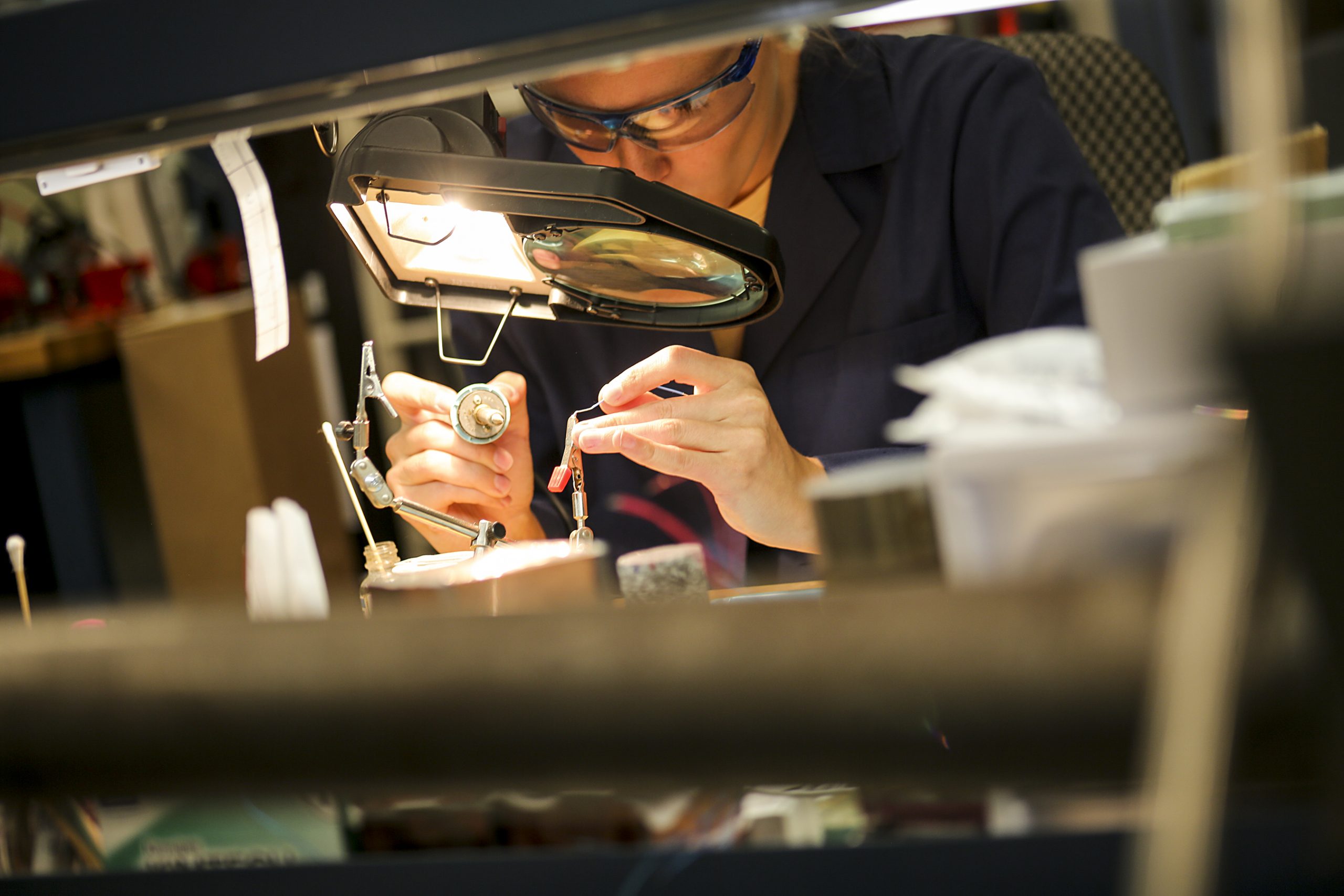The Geomechanics Laboratory allows its users to measure rock properties under a wide range of simulated service conditions up to very high pressures, elevated temperatures, and complex load paths. The laboratory’s capabilities make it useful for research and development in underground construction; geothermal drilling and development; mining, oil and gas production and reservoir management; hydrocarbon, carbon, and energy storage; and much more.
Making predictions of rock mass response and fluid flow through rock masses requires quantitative models of the governing deformation and fracture processes. Measurements taken at the Geomechanics Laboratory provide the information required to build these models and use the models for analysis and numerical design.
With its robust capabilities, the laboratory is well-equipped to support research for a wide range of applications, such as:
- Underground construction
- Mining
- Oil and gas production and reservoir management
- Geothermal drilling and development
- Subsurface storage of hydrogen
- Geologic storage of carbon dioxide
- Hydrocarbon and compressed air storage
- Hazardous waste disposal
- Fluid flow and contaminant transport
- Laboratory and bench-scale evaluation of geotechnical design procedures
Geothermal drilling and development require thorough characterization of in-situ rock properties, fracture processes, and borehole stability, all of which can be characterized through experimental facilities at Sandia.
The Geomechanics Laboratory is currently looking to study these processes at higher temperature conditions (more than 100 degrees Celsius) to evaluate geothermal reservoirs’ stability as well as the various drilling tools and reservoir engineering technologies developed to enhance production capabilities.
Learn more about our experience understanding the mechanical, hydrological, chemical, and thermal forces at play in geothermal systems and during drilling projects.
Supported by combined laboratory work and in situ observations, the Geomechanics Laboratory emphasizes the following activities:
- Characterization of natural fracture systems
- Identification and modeling of rock deformation and failure processes
- Laboratory determinations of thermo-mechanical and transport properties of competent rock and natural fractures, including studies of coupled effects
- Extrapolation of laboratory measurements to field conditions
- In situ stress measurements and evaluation of in situ boundary conditions
- Laboratory and bench-scale validation studies
This facility can characterize the following materials:
- Rocks, sands, soils, and clays
- Composite materials
- Concretes
- Select ceramics
- Foams
- Metals
The Geomechanics Laboratory employs a variety of specialized tools designed to assess rock properties under a wide range of simulated service conditions, from high pressures to complex load paths.
- 0.1-5 MN servo-controlled testing machines
- 1 MN/10 kN-M normal load/torsion testing machine
- 70 MPa -1 GPa pressure vessels (15 cm maximum cavity diameter)
- True tri-axial testing capability
- Hopkinson/Kolsky bar for intermediate rate testing (2.5 cm sample diameter)
- Tri-axial creep apparatus (10-10 s-1 strain-rate resolution)
- Elevated temperature testing to 400 degrees Celsius
- Permeability apparatus with hydrostatic and deviatory loading capabilities
- Thermal properties (thermal expansion and conductivity) testing up to 300 degrees Celsius
- Non-destructive testing facilities including real-time acoustic emissions location system and digital image correlation
- Laser surface profiler (10 Am resolution)
- Petrographic laboratory
- Specialty machining and sample preparation facilities
To use the Geomechanics Laboratory, contact the user liaison.
Contact
Ben Cook
bkcook@sandia.gov
